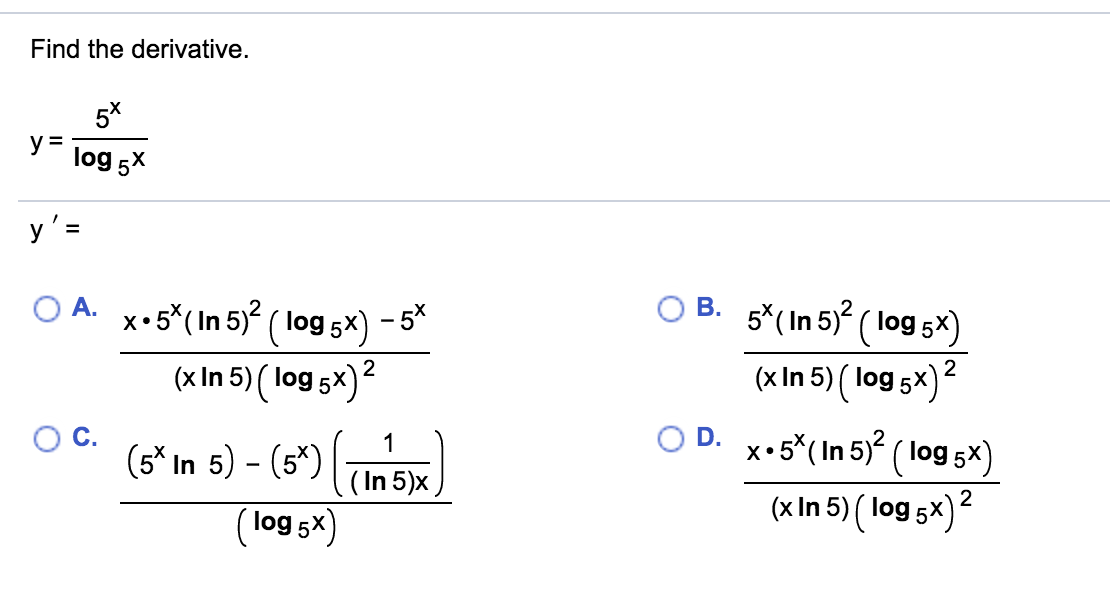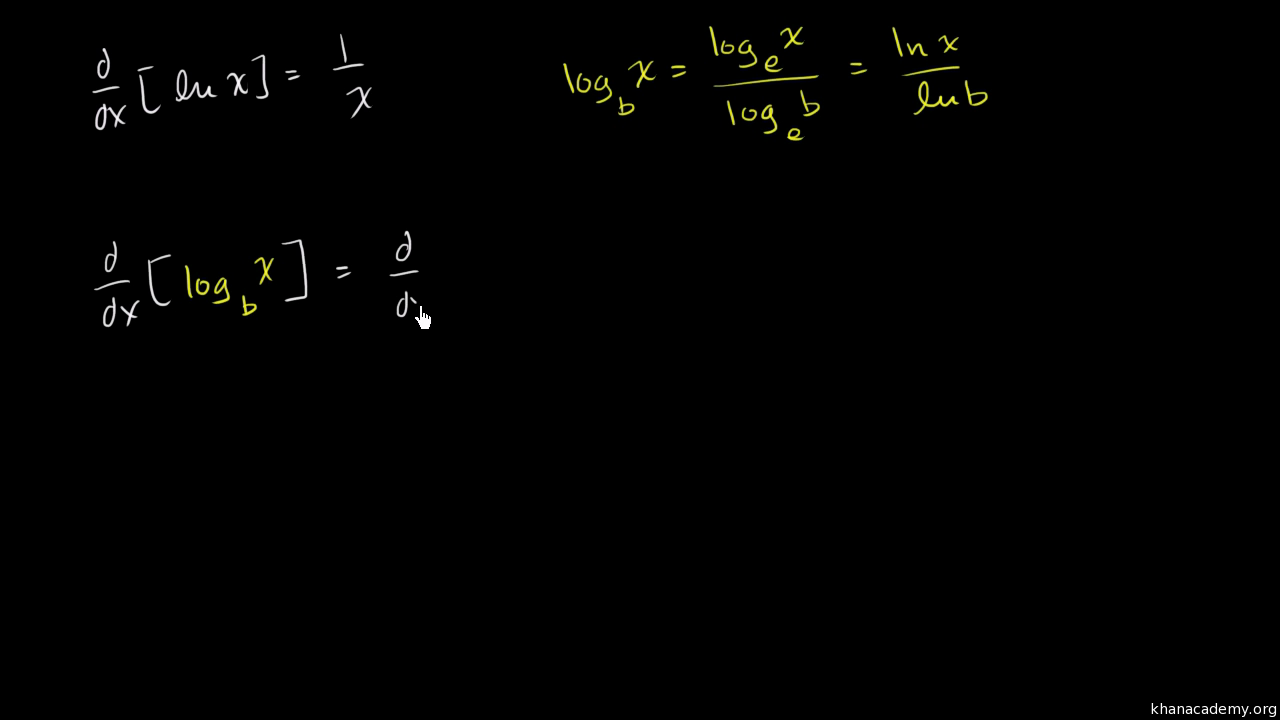

These are called higher-order derivatives. When a derivative is taken times, the notation or is used. Given a function, there are many ways to denote the derivative of with respect to. The natural logarithm is usually written ln(x) or log e (x). The derivative is an important tool in calculus that represents an infinitesimal change in a function with respect to one of its variables.

Natural Log (ln) The Natural Log is the logarithm to the base e, where e is an irrational constant approximately equal to 2.718281828. In your case : ( f ∘ g ) ( x ) = ln (x+1 ), f ( x ) = ln ( x ) and g ( x ) =x+1. Related Pages Natural Logarithm Logarithmic Functions Derivative Rules Calculus Lessons. We can use the chain rule here, naming u = 2 x and remembering that the chain rule states thatĭ y/ d x = 1/ u ⋅ 2 =( 1/ 2 x) ⋅ 2 = 1/ x Derivative of ln(x+1) ( f ∘ g ) ‘ ( x ) = ( ln ( 2 x ) ) ‘ = 1/ 2 x ⋅ 2 = 1/ x. When the logarithmic function is given by: f ( x) log b ( x) The derivative of the logarithmic function is given by: f ( x) 1 / ( x ln ( b) ) x is the function argument. Since f ‘ ( x ) = 1/ x and g ‘ ( x ) = 2, we have : In your case : ( f ∘ g ) ( x ) = ln ( 2 x ), f ( x ) = ln ( x ) and g ( x ) = 2 x. Several examples, with detailed solutions, involving products, sums and quotients of exponential functions are examined. ( f ∘ g ) ‘ ( x ) = ( f ( g ( x ) ) ) ‘ = f ‘ ( g ( x ) ) ⋅ g ‘ ( x ). Examples of the derivatives of logarithmic functions, in calculus, are presented. For example, to calculate online the derivative of the polynomial following x3+3x+1, just enter derivativecalculator(x3+3x+1), after calculating result 3x2+3 is returned.

We have proven the following theorem The derivative of ln(2x) The derivative calculator may calculate online the derivative of any polynomial. Now implicitly take the derivative of both sides with respect to x remembering to multiply by dy/dx on the left-hand side since it is given in terms of y, not x.įrom the inverse definition, we can substitute x in for e^y to get It would be better to rearrange this and use implicit differentiation than attempt to differentiate directly. Our task is to determine what is the derivative of the natural logarithm. The right hand side of this expression is fairly horrible.


 0 kommentar(er)
0 kommentar(er)
